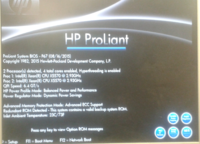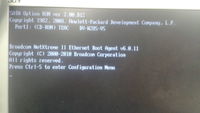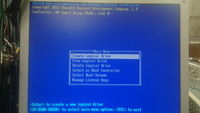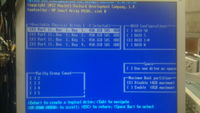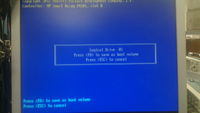DAQ6 CentOS7 install
enp4s0f0: flags=4163<UP,BROADCAST,RUNNING,MULTICAST> mtu 1500
inet 134.50.3.153 netmask 255.255.255.128 broadcast 134.50.3.255
inet6 fe80::82c1:6eff:fe21:396 prefixlen 64 scopeid 0x20<link>
ether 80:c1:6e:21:03:96 txqueuelen 1000 (Ethernet)
RX packets 3699 bytes 4760308 (4.5 MiB)
Setup Disk array
The SAS hard drives are not recognized when the computer is first taken out of the box
You need to enter the Configuration Menu from the BIOS by hitting Ctrl-S. You get to this point during the boot process by hitting any key after the computer has done a self diagnostic.
The Startup Splash screen takes a while to come up and looks like this
After you see the above splash scree and hit any key you will see the screen go dark and then asked to hit Ctrl-s
Below is the configuration menu you will see, select the Create Logical Drive menu item
Below is the configuration chosen to read a RAID disk using the four drives in a RAID 10 (1+0) configuration
You then return to the configuration menu and select "Select Boot Volume" to see the screen below
After the above is setup, the standard installation procedure from a Live DVD can be used to install CentOS 7
Instal Xfce
yum install epel-release
yum --enablerep=epel -y groups install "Xfce"
then setup the graphical target
systemctl isolate graphical.target
to keep it as the default
sudo systemctl set-default graphical.target rm '/etc/systemd/system/default.target' ln -s '/usr/lib/systemd/system/graphical.target' '/etc/systemd/system/default.target
the command below will check which GUI is used
ls -l /etc/systemd/system/display-manager.service
Install FVWM
KDE was very slow so I installed FVWM using
as root
yum install fvwm
I then set the runlevel to 3
systemctl set-default multi-user.target
you then login as daq and create the file ".xinitrc" with the line entry
exec /usr/local/bin/fvwm
this will launch fvwm for you if you type the folowing on the command line
ssh-agent startx
